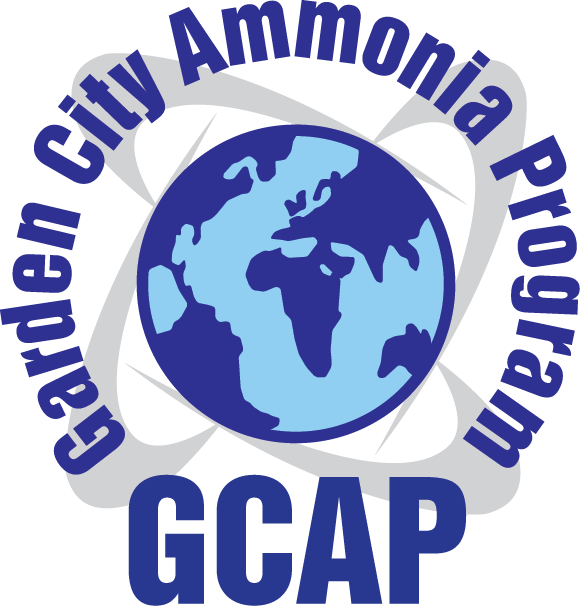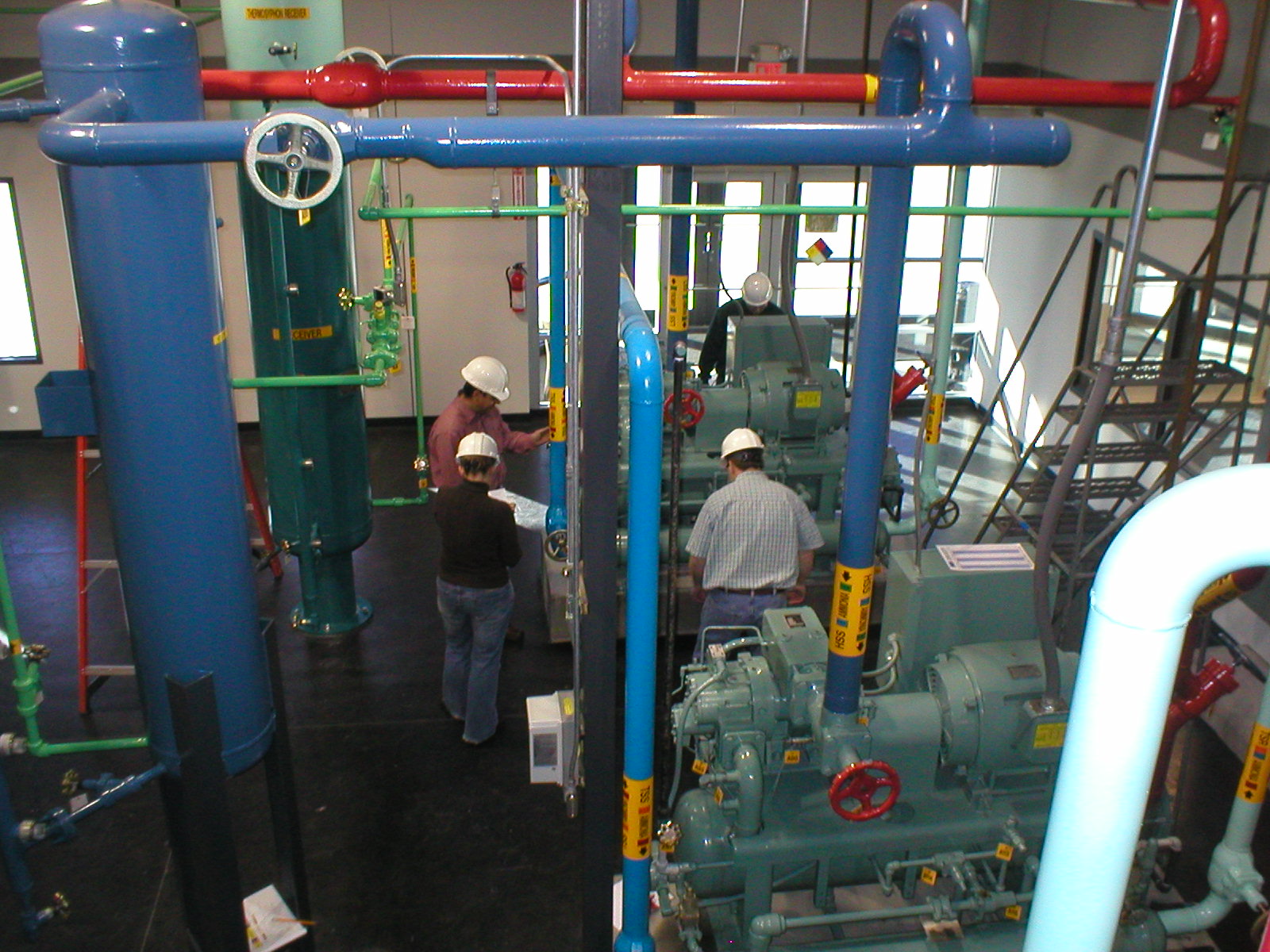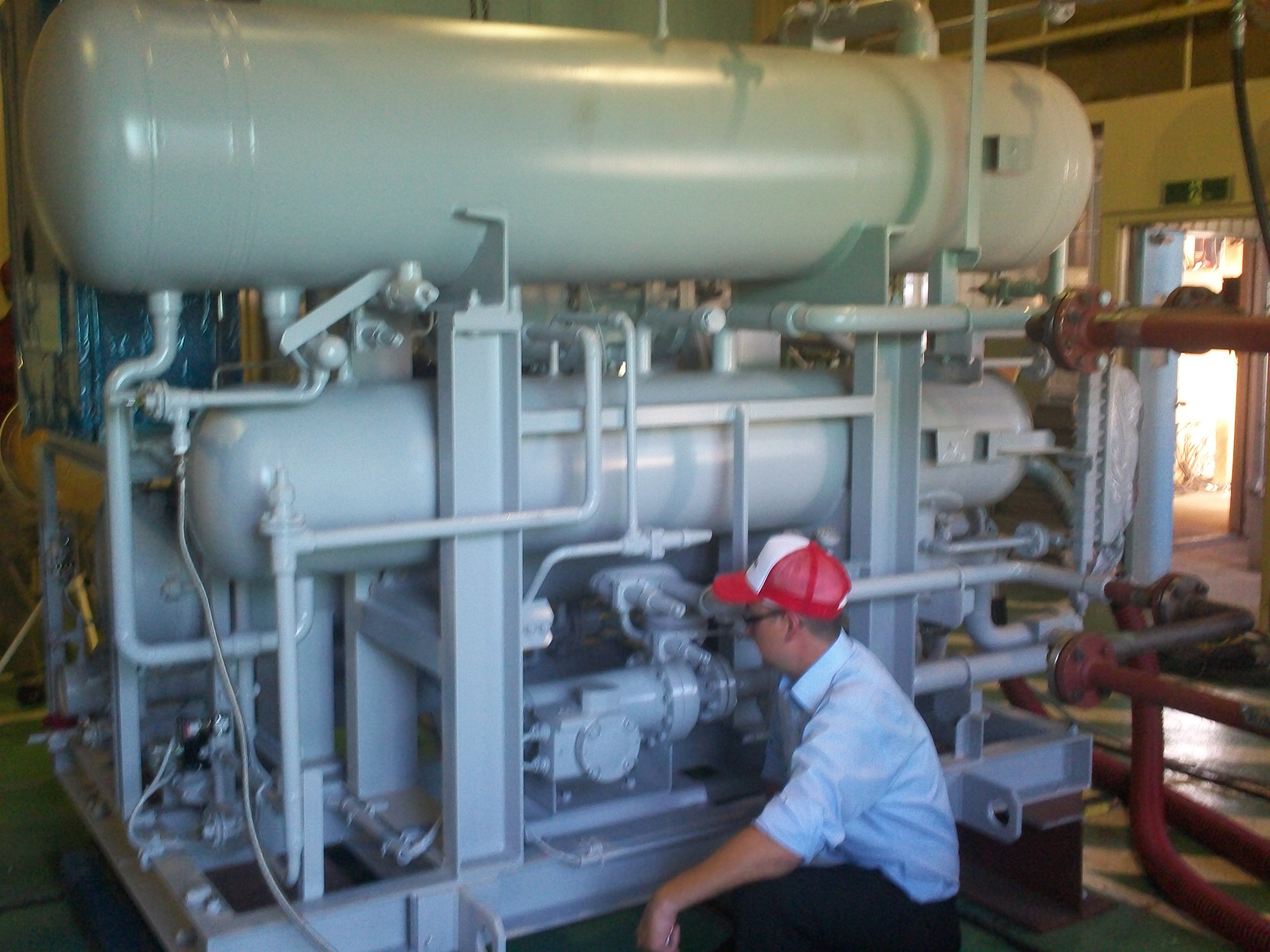Operator II
ABSTRACT
This course is 2nd in a series of courses to prepare the ammonia refrigeration operator to be knowledgeable and proficient in the safe, effective and efficient operation of industrial refrigeration systems.
COURSE DESCRIPTION
This course continues in the theory and operation of the ammonia refrigeration cycle and associated equipment. It introduces liquid feed to an evaporator and the function of vessels and their liquid feeds, direct expansion evaporators, gravity flooded evaporators, pumped liquid recirculation systems, secondary refrigerants, NH3 pressure enthalpy diagrams, two stage systems and defrost systems. Laboratory exercises in variable frequency drives, calibrating refrigeration sensors, basic electrical troubleshooting, transducer evaluation, compressor control panel, intercooler desuperheating and refrigerant pump out assignments help the students in reinforcing their theoretical knowledge.
PREREQUISITES
Operator I
COURSE OBJECTIVES
Upon completion of this course the student will:
- Understand the working definition of ammonia refrigeration plant safety
- Understand the basic thermodynamics relevant to ammonia refrigeration.
- Demonstrate the safe use of multimeters.
- Demonstrate the calibration of temperature and pressure sensors.
- Plot refrigeration systems on pressure enthalpy diagrams.
- Evacuate (pumpout) subsystems of an ammonia refrigeration process.
- Operate and troubleshoot variable frequency drives (VFD’s).
- Understand the desuperheater requirements of two-stage systems.
- Understand the different types of evaporators, and how they work.
- Understand the ways of defrosting evaporators.
- Demonstrate changing parameters and setpoints on refrigeration controllers.
- Understand metering valves and expansion valves.
TOPICAL OUTLINE
Low Side Liquid Feed Valves and Controls
Direct Expansion Systems
Flooded Systems
Pumped Liquid Recirculation Systems
Secondary Coolant Circulation Systems
Heat Flow in Refrigeration Systems
Two Stage Systems and Cascade Systems
Coil Defrost
Air / Water / Niagra / Electric / Hot Gas / Cool Gas
CPR Systems / Economizer Systems
Single Pumper Drums / Duel Pumper Drums
Pump Downs
Trouble Shooting
Adjustments
4-20 ma calibration
VFD’s
COMPETENCIES
LEARNING TASKS AND ACTIVITIES
Students will complete verbal, written, or hands-on activities.
Instruction in this course will be a combination of classroom lecture, demonstration by qualified individuals, hands-on lab experiences, and various reading assignments.
ASSESSMENT OF OUTCOMES
Measurement of a student's ability will consist of written tests over all material listed above, oral reports focusing on student understanding of lab assignments and demonstrations, and completion of competencies listed for this class.
COGNITIVE
The student will be given written tests and research questions to measure and reinforce his ability to find in formation. The emphasis will be on the process of finding and using information and not memorizing it.
METACOGNITIVE
The student will be expected to perform tasks using the publications available to him as his guide. These tasks may take the form of setting up equipment or performing some procedure outlined in the manuals. Written tests will contain questions requiring the student to use information from several sources in order to determine a solution to the problem. Students will be expected to answer the "why does" questions using their personal experience, knowledge developed in class, and information found in other disciplines.
AFFECTIVE
Attendance will be monitored, sometimes in the form of quizzes, to determine any problems that may be developing within the student.
PERFORMANCE AND SKILLS
As listed under the Metacognitive domain the student will be expected to perform tasks using the knowledge they have acquired in class and the information found in the manuals. The student will be expected to physically perform tasks even though he may not be able to do this without guidance from the instructor and fellow students.
The final grade will be a combination of evaluations in the areas listed above. The exact mix will depend on the availability, equipment and the student's needs. In general, the evaluation will consist of about:
The effective and skill domains will be further evaluated during the internship periods in which the sponsoring dealer evaluates the student.
GRADING SCALE
92 - 100% = A
83 - 91% = B
74 - 82% = C
70 – 73% = D
< - 69% = F
RATING SCALE FOR ATTACHED PROFILE SHEETS
3 Mastered
2 Competent
1 Needs additional training
N No exposure
COMPETENCIES Operator II
I. Safety
1. Wear personal protective equipment during operation of refrigeration equipment.
2. Describe safety considerations when using electrical testing equipment.
3. Wear personal protective equipment when testing high voltage electrical equipment.
4. Describe how thermostatic expansion affects trapped liquid refrigerant.
II. Metering Devices
1. Define metering device as used in an ammonia refrigeration system.
2. Describe the difference between a metering device and an expansion device in an ammonia refrigeration system.
3. List and describe three different types of expansion devices.
4. Describe the internal workings of a thermostatic expansion valve.
III. Low Side Vessels
1. List and describe five functions of a low side vessel.
2. Describe the two most common forms of phase separation in a low side vessel.
3. Describe the purpose of the following vessels: surge drum, pumped liquid recirculating vessel, and inter-cooler.
4. List and describe four devices used for controlling liquid level in a low side vessel.
IV. Direct Expansion Systems
1. Describe a direct expansion evaporator system.
2. Describe the function of the main components in a direct expansion system.
3. Explain the differences in velocity between liquid and vapor in a DX coil.
4. Identify the advantages and disadvantages of bottom and top fed coils.
5. Describe the importance of a suction line accumulator.
V. Flooded Systems
1. Describe a flooded evaporator system.
2. List and explain the advantages of a flooded coil over a DX coil.
3. Describe three methods of liquid level control in a flooded coil system.
4. Describe the purpose of a surge drum in a flooded coil system.
5. List three problems oil creates in an evaporator.
VI. Pumped Recirculating Systems
1. List and describe the two methods used in industrial refrigeration system for pumping liquid refrigerant.
2. List and describe the advantages of gas pumping in a system.
3. List and describe the advantages of mechanical pumping in a system.
4. Calculate liquid overfeed rate for ammonia and halocarbon refrigerants.
5. List three major problems that migrating oil can cause in a refrigeration system.
VII. Secondary Coolant Systems
1. Describe the eutectic point of brines and glycols.
2. List three advantages of a secondary coolant loop.
3. List five disadvantages of a secondary coolant loop.
4. Describe a two-pipe secondary coolant system.
5. Describe a three-pipe secondary coolant system.
6. List the items to monitor within a brine system.
VIII. Heat Flow Characteristics
1. Explain the four factors that control the conduction of heat from one material to another.
2. Identify factors that either increase or decrease cooling effect.
3. Describe how thermal conductivity, or K Factor, affects heat transfer.
4. Plot a simple DX refrigeration cycle on a pressure-enthalpy diagram.
5. Identify the lines representing the four basic components on the pressure-enthalpy diagram.
6. Calculate the theoretical discharge temperature, Latent heat of vaporization, refrigerating effect, and the percent of flash gas from the pressure-enthalpy diagram.
7. Identify and explain the lines on a pressure-enthalpy diagram: constant quality, constant pressure, isothermal, constant enthalpy, constant entropy, and specific volume.
IX. Two Stage Systems
1. Describe the advantages of a two-stage system operating at higher compression ratios.
2. Describe the function of an inter-cooler.
3. Explain why the operating cost of a two-stage system is lower than a single stage system.
4. Plot a two-stage system on a pressure enthalpy diagram and explain the advantages from single stage.
5. Describe the layout of a simple two-stage system.
6. Describe a Cascade System.
7. List the advantages of a cascade system.
8.List the disadvantages of a cascade system.
X. Competency Skills
1. Follow oral instructions:
a.Listen for and identify key words
b.Listen for words that identify a procedure.
c.Listen for steps or actions to be performed.
d.Listen for clues regarding the order or sequence in which a task is performed.
2. Participate in group communication activities.
3. Estimate, apply and solve problems involving fractions, decimals, percentages, and real numbers.
4. Convert common units of measurement within and/or across measurement systems (metric/English, etc.).
5. Construct and interpret tables, charts, maps, and/or graphs.
6. Compile and maintain records, logs, lab notebooks, and other documents.
Contact us for more info
Garden City Ammonia Program
2405 E. Fulton Plaza
Garden City, KS 67846
620-271-0037
620-271-0484 FAX
ammonia@pld.com
www.AmmoniaTraining.com
www.BoilerLicense.com 
Copyright 2011 - Garden City Ammonia Program - All Rights
Reserved
|


